Frequently Asked Questions
Finding help and information (6)
All the Australian and New Zealand Standards relevant to CTIQ and QTimber are listed under the Guides tab: Resources > Australian Standards.
1. See 'How to use QTimber' under the Guides tab. Choose a either a quick guide or the full guide.
2. Click the 'Help' icon in 'Build with timber' for a description of the 3 steps.
3. The filters and table columns are explained by information icons (i).
4. Hyperlinked terms in the tables are linked to screen tip definitions.
All these topics and more are found under the Guides tab.
1. Use the A-Z glossary under the guides tab.
2. Hyperlinked terms on the pages and tables are described in screen tips.
Ask us! – use the Feedback button on the home page.
You can click on any underlined value to see the definition in a popup window. Definitions of terms used throughout the QTimber website are also located in the Guides > A to Z glossary.
QTimber’s purpose (5)
QTimber refers to timber decay hazard zones to answer queries about compliance when building with timber. Although developed for Queensland, it can also be used to find suitable timbers for decay hazard zones anywhere in Australia. See the guide: ‘Building outside of Queensland?’
Anyone designing or constructing with timber in Class 1 and Class 10 buildings (houses, carports, garages, greenhouses and sheds) in Queensland.
QTimber is designed for builders, designers, architects, engineers, timber preservers and specifiers and retailers as easy access to the required standards for building with timber products.
Amendments to CTIQ are made immediately in QTimber, so the most up-to-date version is the live site. The details of technical amendments (that may affect compliance) are recorded with the date in the section ‘Versions’ under the About tab. It’s a good idea to keep a record of the consultation date.
QTimber is a digital version of the publication Construction timbers in Queensland (CTIQ): noted as a primary referenced document in the Queensland variations to the Building Code of Australia (BCA) under the Queensland Building Act 1975.
The Building Code of Australia (BCA) includes a specific requirement for using suitable materials in construction. CTIQ provides information on the properties and performance of timber that will meet the ‘construction deemed to satisfy’ provisions of the BCA.
QTimber is an easy-to-use, look-up tool for CTIQ.
QTimber applies to all timber construction in Queensland if related to Class 1 and Class 10 buildings (houses, carports, garages, greenhouses). It also provides information about timber properties that is useful for any timber project.
Using QTimber (7)
With wi-fi connection, QTimber is scaled to use on smart phones.
QTimber cant be downloaded to phones, to ensure there is only one, current version available.
Suitable timbers are determined by the decay hazard zone you are building in; the building application and if it is protected or not. QTimber calculates which suitable timbers remain as you choose location and building member. At step 3 you can look at any of the suitable timbers and any restrictions on their use.
Can I use treated rose gum to build a deck in Brisbane?
- Click Build with timber.
- Step 1. Select Brisbane from the list (or Brisbane City on the map). Then select Brisbane City from the table (this takes you to Step 2).
- Step 2. Select Decking from the list. Select Decking (Domestic) from the table (this takes you to Step 3).
- Step 3. Choose a timber group (optional, but choosing ‘Structural’ reduces the list to the main, commercial timbers used in construction); then choose gum, rose from the list. The conditions for using rose gum for domestic decking in Brisbane are given (H3! – click for its definition) and check the advisory information (A2).
Click the 'eye' to see the timber factsheet and to download the PDF report.
Go to the Guides tab and click Building members
You can search, sort and filter by target design Life, building members and environment.
QTimber is derived from data and other information about all timbers potentially available for construction in Queensland at the time CTIQ was first published.
The timber list can be shortened easily by using the timber groups filter in 'Build with timber' and Browse timbers'. The ‘structural’ timber group includes 34 timbers; the ‘appearance’ group includes 95 timbers; ‘all commercial’ includes 108 timbers and ‘Any’ returns the complete list of more than 600 timbers. Reset to choose a new timber.
See more about the background to CTIQ.
QTimber represents CTIQ, a primary referenced document in the Queensland variation of the Building Code of Australia, and must reflect any technical changes that may affect compliance. To avoid the risk that an out-of-date version is used wrongly, a single point of reference is maintained as the current, online version of QTimber.
1. First, check which filters are on; the ‘structural’ timber group includes 34 timbers; the ‘appearance’ group includes 95 timbers; ‘all commercial’ includes 108 timbers and ‘Any’ returns the complete list of more than 600 timbers. Reset to choose a new timber.
2. Check you are using the standard trade name. The timber names in QTimber are standard trade names (AS/NZS 1148-2001). The list is grouped by similar names like ‘gum’ or ‘pine’, so scrolling will show them all together. You may have to look through the similar options, for example for ‘pine’ or ask your supplier about the trade names.
